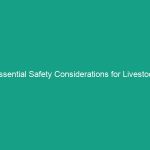Introduction
Good morning team,
Today, we’re going to discuss a crucial topic for our Workplace Safety: Fall Arrest System Anchor Points. Understanding how to identify and test these anchor points is not just a regulatory requirement; it’s a vital part of keeping you safe while working at heights. As we navigate different tasks that may require Fall Protection, knowing the ins and outs of anchor points can significantly reduce the risks associated with falls.
Let’s dive into why this topic is essential and how it impacts your daily operations.
Understanding Fall Arrest System Anchor Points
A Fall Arrest System Anchor Point is a secure point of attachment for equipment used to prevent falls from heights. These points are integral to any fall protection system, and their correct identification and testing are paramount. When working at heights, the risk of falling is ever-present, and a reliable anchor point can mean the difference between life and death.
Many might think that any sturdy structure can serve as an anchor point, but that is a misconception. Proper anchor points must be specifically designed for this purpose and must meet Safety Standards to ensure they can withstand the forces applied during a fall.
Key Hazards, Risks, and Safety Considerations
Working at heights poses several Hazards, and the risks associated with inadequate anchor points can lead to severe consequences:
- Inadequate Strength: If an anchor point is not strong enough to withstand the forces generated during a fall, it can fail, leading to serious injuries or fatalities.
- Improper Positioning: An anchor point positioned incorrectly can increase the likelihood of a fall or cause the worker to swing dangerously upon falling.
- Environmental Conditions: Weather factors like wind, rain, or icy conditions can affect the integrity and usability of an anchor point.
Ignoring safety protocols can lead to real-world consequences, such as injuries, property damage, or even legal repercussions for the company.
Best Practices, Procedures, & Actionable Advice
To ensure the safety of all employees, follow these Best Practices for identifying and testing fall arrest system anchor points:
1. Identify Suitable Anchor Points
When selecting an anchor point, consider the following:
- It must be capable of supporting at least 5,000 pounds.
- It should be positioned above the worker’s head to minimize fall distance.
- Avoid using anchor points that are subject to movement or potential failure.
2. Perform Regular Inspections
Conduct thorough inspections of anchor points before each use. Check for:
- Signs of wear, corrosion, or damage.
- Integrity of the structure to which the anchor point is attached.
- Proper installation and secure attachment of the anchor point.
3. Test Anchor Points
Testing anchor points is essential to ensure they can withstand the forces generated during a fall. Follow these steps:
- Using a load cell or a similar device, apply a force equal to what would be exerted during a fall.
- Monitor for any movement or failure during testing.
- Document the results and take the necessary actions if an anchor point does not meet safety standards.
4. Use Proper Equipment
Always use equipment that is compatible with your anchor points. Ensure that:
- Your harness is correctly fitted and rated for the task.
- All components of the fall protection system are inspected regularly.
5. Training and Awareness
Regular Training sessions are important for all employees who work at heights. Ensure that:
- Everyone understands how to identify and test anchor points.
- Employees are aware of the hazards and risks associated with working at heights.
For example, a construction site recently experienced an incident where an employee fell due to an improperly tested anchor point. This incident led to a reevaluation of the training program and a renewed focus on anchor point safety. Let’s learn from such incidents to prevent them in our workplace.
Regulations, Standards, and Compliance
Compliance with safety standards is a legal requirement and is essential for maintaining a safe working Environment. Relevant OSHA standards include:
- osha 1926.502: Fall Protection Systems Criteria and Practices
- OSHA 1910.140: Personal Fall Protection Systems
Adhering to these Regulations not only protects employees but also shields the company from potential liabilities. Regular audits and compliance checks are necessary to ensure that safety practices are being followed correctly.
Employee Engagement & Discussion
Now that we’ve gone through the essentials of identifying and testing fall arrest system anchor points, let’s open the floor for discussion. What safety challenges have you encountered related to anchor points? Have you ever had to test an anchor point? Share your experiences and insights!
Conclusion & Key Takeaways
In summary, understanding fall arrest system anchor points is critical for your safety when working at heights. By identifying suitable anchor points, performing regular inspections, testing for strength, using the right equipment, and participating in ongoing training, you can significantly reduce the risks associated with falls.
Remember, safety is a collective responsibility, and your commitment to these practices is crucial. Thank you for your attention today, and let’s make safety our top priority!


